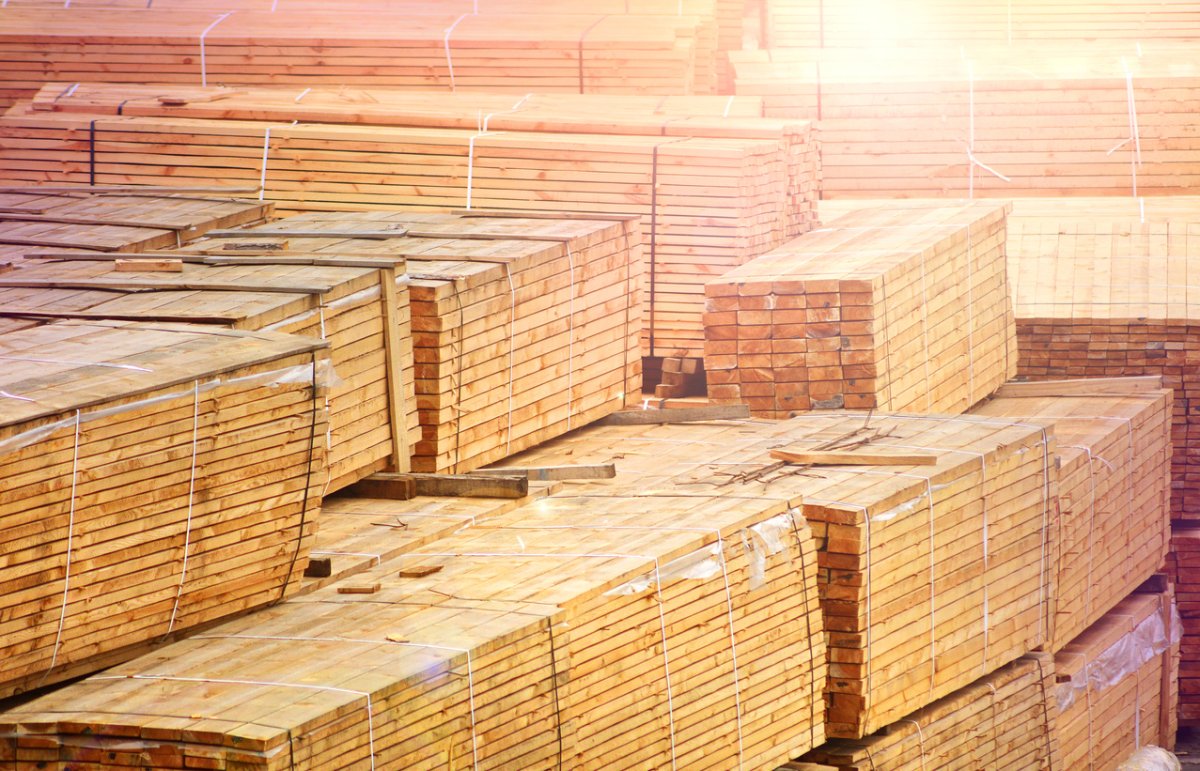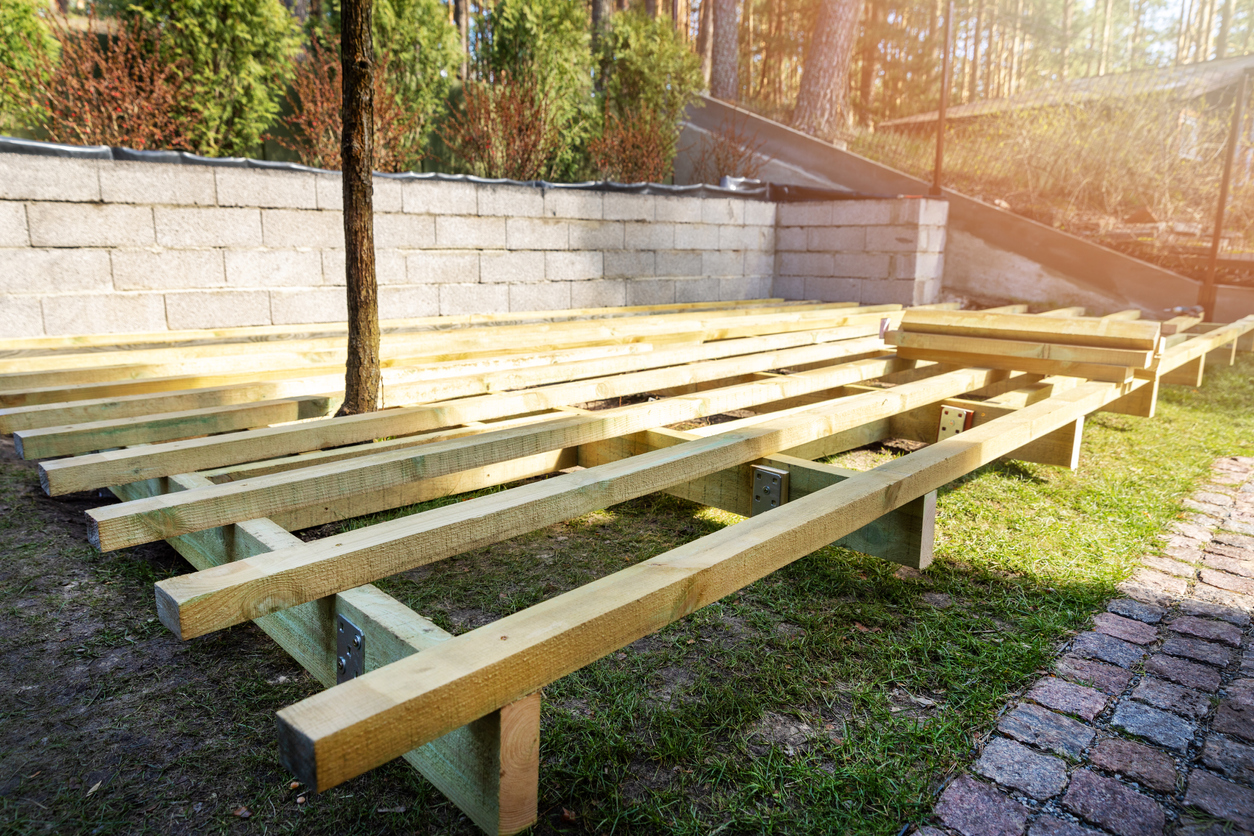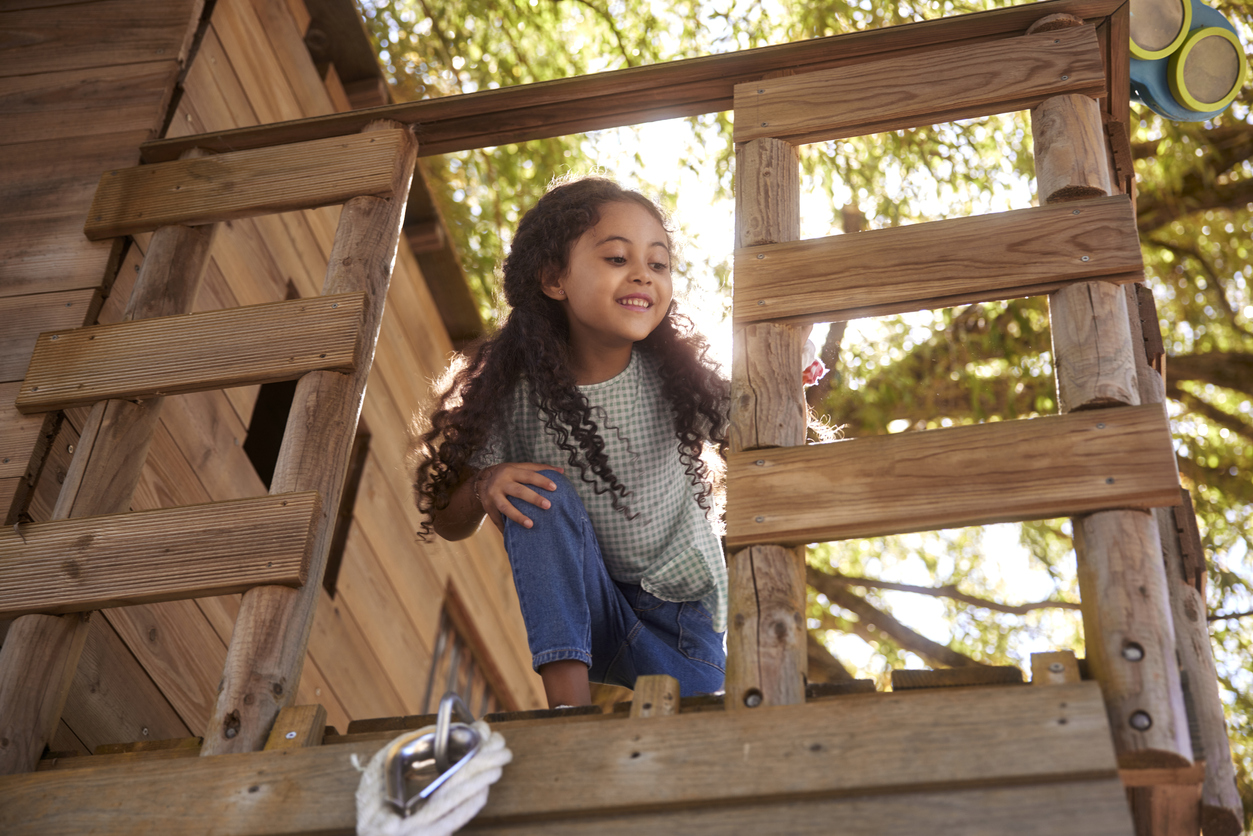

We may earn revenue from the products available on this page and participate in affiliate programs. Learn More ›
While the base material is the same, pressure-treated wood is very different from typical wood products. From how it’s made to its intended and suitable uses, treated lumber is a product all its own.
But what is pressure-treated wood? How is it treated? Is it safe? And what are those intended and suitable uses mentioned above? This list of seven important things to know will address those questions and more. Keep reading to learn about this common yet very particular building material so you’ll know how best to use it in your projects.
1. Pressure-treated wood is wood that has been treated with chemicals that protect the wood from rot and insects.
Wood structures that see constant exposure to the elements are prone to rot from moisture and insect damage. Decks, railings, playground equipment, fences, garden beds, and other wooden structures require pressure-treated wood to stave off those life-shortening threats.
Manufacturers make pressure-treated wood by placing lumber in a vacuum and treating it with chemicals. Up until 2004, the main chemical used in pressure-treated lumber was arsenic, but the EPA banned it in the residential market because of health concerns. Copper then became the main ingredient used to treat lumber, a change that drove up pressure-treated lumber prices tremendously.
2. Pressure-treated wood has particular uses and is not suitable for all applications.
With the copper content in pressure-treated wood as high as it is, it’s resistant to rot and insects. Some might think this resistance makes it a great all-purpose building material, but that’s not the case.
Pressure-treated wood is ideal for decks, posts buried in the ground, and even ground contact in finished basements, but it’s not always the best product for every job. For instance, pine, spruce, and fir framing lumber encapsulated behind sheathing and siding doesn’t see the same type of exposure, so it’s not nearly as susceptible to rot or bugs. Because they’re much less expensive than pressure-treated wood, these framing materials are far more suitable for interior work. Also, the chemicals in treated lumber are corrosive to untreated steel, requiring more expensive galvanized fasteners.
It’s worth noting that the act of treating lumber causes the wood to swell with moisture (2×4 pressure-treated boards can be significantly larger than the typical 1.5-inch by 3.5-inch dimensions). Then, as the wood dries, moisture leaches out, causing a few issues. For one, the wood can often warp and shrink as the moisture leaves, making it unsuitable for fine woodworking projects. As well, as the chemicals leach from the wood over time, they penetrate the soil or water around them. While the general consensus is that today’s pressure-treated wood is safe for raised garden beds, organic growers disagree. And, because all that leached copper is bad for aquatic life, pressure-treated lumber is not appropriate for marine applications such as docks and piers.

3. There are three types of pressure-treated wood: borate, alkaline copper quaternary, and noncombustible.
Not only is pressure-treated wood different from typical lumber, but it also comes in different types. They break down into three categories:
- Borate products are pressure treated with water-based mineral salt solutions. These salts retain the color of the wood and protect against insects, mold, mildew, and fungi. But constantly wet conditions can wash the treatment out of the wood, which isn’t good for the wood or the surrounding environment.
- Alkaline copper quaternary (ACQ) wood is treated with an environmentally friendly solution containing copper and ammonium alkyl. It’s effective and safe but shouldn’t come in contact with food or animal feed. Also, it does tend to change the color of the wood.
- Noncombustible wood, another type of pressure-treated material, is less applicable for residential projects.
4. Painting pressure-treated wood is difficult because the paint cracks when the lumber shrinks.
The amount of moisture that pressure-treated lumber can retain is truly remarkable. Also, as the pores take on the chemical, the lumber will swell a bit in size. Both of these factors make it tough to paint.
With the moisture in the pores of the wood, paint and opaque stains aren’t able to penetrate as they would with typical materials. This makes for weak bonds and often results in the paint peeling or sloughing off. Also, as pressure-treated wood dries, it shrinks, causing the paint to wrinkle, crack, and flake.
Clear sealers and stains are more suitable for pressure-treated wood, although waiting for the wood to dry completely (which can take months) is an option.
Related: The Dos and Don’ts of Deck Maintenance

5. Chemicals that are used in pressure treating also control bugs.
The chemicals that manufacturers use to create pressure-treated wood protect the material from insects, and they work by repelling bugs as opposed to killing them. This keeps termites, carpenter ants, carpenter bees, and other wood-gnawing insects from taking pressure-treated structures to an early grave.
But pesticides are worrisome for parents, so there is often concern about using pressure-treated wood for playground structures. Generally speaking, arsenic-free pressure-treated wood is considered safe for children to be around in a play environment. That said, some guidelines still suggest that children shouldn’t be around the sawdust created during the construction process.
Also, as mentioned earlier, pressure-treated wood isn’t suitable for marine applications. The copper and other pesticides will leach into the water and cause issues for wildlife. For dock pilings, special rot-resistant hardwood known as greenheart is preferred. No chemical treatments are used in the manufacture of marine-grade plywood for actual boat construction.
6. Pressure-treated decking may last up to 10 years, whereas poles might last up to 40 years.
Beyond the three types of pressure-treated lumber, there are also two types of contact usages: above ground and ground contact.
Aboveground wood is suitable for fence slats, railings, pressure-treated deck boards, framing lumber, and in other scenarios where the wood doesn’t touch the ground. These pieces of wood contain fewer chemicals, so they might last around 10 years with proper care and sealing.
Ground-contact lumber is, as the name suggests, suitable for contact with the ground. It’s commonly used for pressure-treated posts and some framing. Containing a greater amount of chemical treatment, these wood products can last much longer than aboveground lumber, and up to 40 years, in some cases.

7. Pressure-treated wood is completely safe, but do wear a mask if you cut, sand, or drill it.
There was a time when pressure-treated lumber might not have been the safest material to be around. But the EPA banned arsenic-treated PT wood in 2004, and the products available today are completely safe.
With that said, it’s still wise for DIYers to take some precautions. It’s accepted that wearing a mask when cutting or drilling wood is a smart move. Also, be sure not to cut it indoors—ventilation is your friend.
If there is any scrap wood left over after a project, take it to the dump. Burning pressure-treated wood is not recommended. Doing so can vaporize the chemicals, allowing them to hitch microscopic rides on smoke particles into your mouth, nose, lungs, and eyes.
